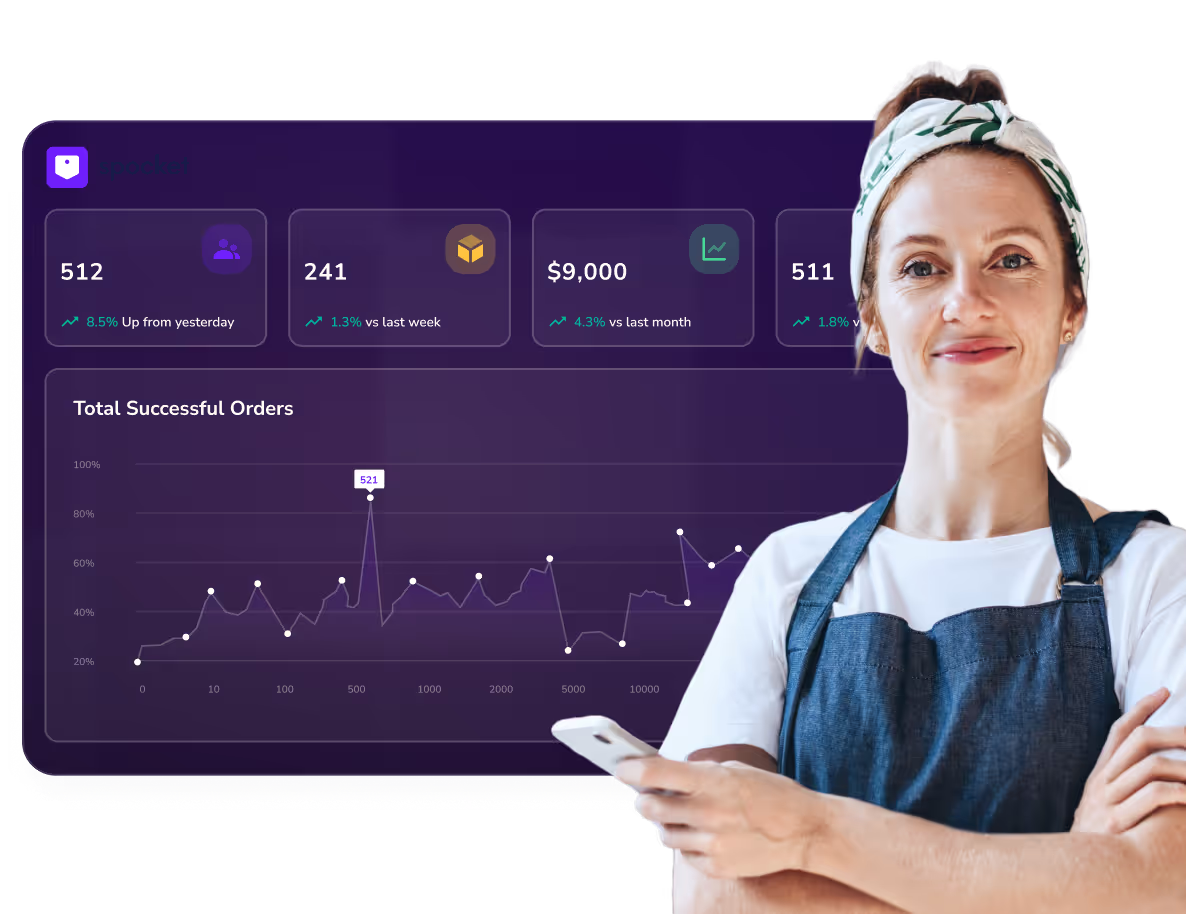Running an online store without insights is risky. You might miss hidden trends or ignore profit leaks.
The solution? E-commerce analytics tools. They reveal patterns, customer behaviors, and sales performance in real time.
Your next action? Dive into this blog to learn how these tools can give you a crystal-clear view of your store’s health. Don’t stay in the dark. Understand what’s working and fix what’s not.
By the end, you’ll have a roadmap for selecting the right tool for your business. Are you ready for real progress? Let’s begin.
What is E-commerce Analytics?

E-commerce analytics collects and interprets data to understand how your online store performs. It tracks every click, purchase, and bounce to turn raw numbers into meaningful insights.
Think of analytics as a guided tour of your store’s health. From traffic spikes to cart abandonment rates, analytics highlight areas that need attention and what’s working well so you can replicate success.
This clarity helps you make data-driven decisions. Instead of guesswork, you know exactly which products are winning. You see which marketing channels bring conversions. And you discover the kind of experience shoppers crave.
Without e-commerce analytics tools, you’re left with blind guesses. With them, you get direction and control. They empower you to see both pitfalls and potential.
Why Do You Need E-commerce Analytics?

E-commerce is competitive. Every store wants more sales, but how to get them is unclear. That’s where analytics step in.
E-commerce analytics can help you identify top-performing products, track customer journeys, and reduce costly returns. These insights can guide your marketing spending, ensuring your budget goes to effective strategies.
Analytics also help you spot emerging trends. You’ll know when your audience preferences shift. This knowledge gives you a head start against competitors. You can pivot quickly, adjust inventory, and keep customers satisfied.
Without solid analytics, you’re gambling with your resources. With them, you’re investing wisely. That’s real power for building a thriving online business long term. Period.
What are E-commerce Analytics Tools?
E-commerce analytics tools transform raw data into actionable insights. They sift through orders, customer behaviors, and traffic sources to show you patterns you’d otherwise miss.
These platforms often connect directly to your online store, pulling real-time data. Some tools focus on website behavior, showing you where users click and where they drop off. Others highlight sales trends or marketing metrics. Many are robust enough to combine all these views in one dashboard.
You gain clarity on best-selling items, cart abandonment triggers, and customer demographics. This helps you tweak pricing, refine ad campaigns, and forecast inventory needs.
E-commerce analytics tools are your digital detective. They help you decode what’s going on behind the scenes. Use them.
Benefits of Using E-commerce Analytics Tools
E-commerce analytics tools offer more than just pretty graphs. They help you optimize your store’s performance from every angle.
First, they pinpoint problem areas, such as slow-loading product pages or confusing checkout steps. Fixing these hiccups leads to higher conversion rates. Second, they reveal top-selling items, empowering you to invest in inventory that moves. Third, they guide targeted marketing so you don’t waste funds on the wrong audience.
You also gain insights into customer lifetime value, enabling you to build loyal relationships. Moreover, accurate forecasting helps avoid overstocking or running out of popular products. Ultimately, analytics provide confidence in your decisions. You base actions on facts, not hunches.
How to Measure Your Store’s Performance Through E-commerce Analytics

Start by defining your key performance indicators (KPIs). Every online business is unique, so choose metrics that align with your goals. For example, you could use average order value, conversion rate, or repeat purchase frequency.
Next, set up tracking. Most e-commerce analytics tools integrate with popular platforms like Shopify or WooCommerce. Once installed, regularly check your dashboard. Look at traffic sources, bounce rates, and checkout funnels.
Dig deeper. Identify pages where customers leave. Optimize navigation and design for a smoother journey. Monitor cart abandonment stats, then test solutions—like sending reminder emails—to recover lost sales.
Don’t forget about revenue segmentation. Which categories drive the most profit? Are your marketing campaigns producing solid returns? Review these data points often to stay agile.
Finally, keep refining. E-commerce analytics is an ongoing process, not a one-time setup. Actionable insights come from consistent observation. Keep learning always.
Key Metrics to Look for in E-Commerce Analytics Tools
Choosing the right metrics is crucial. Conversion rate is often the first stop. It tells you how effectively visitors become buyers. Next is the average order value, revealing how much each customer spends per transaction. A rising average order value indicates successful upselling or cross-selling.
Customer lifetime value (CLV) is another must-track metric. It estimates how much revenue a single shopper generates over time. A high CLV often means strong customer loyalty. The cart abandonment rate is also critical. It signals how many people abandon their carts before paying.
Don’t overlook cost per acquisition (CPA). This metric shows how much you spend to acquire one new customer. Lastly, bounce rate matters, too. A high rate can indicate poor site design or irrelevant marketing.
Look for e-commerce analytics tools that monitor these metrics in real-time. This will help you stay proactive: measure, adapt, and thrive.
Top E-commerce Analytics Tools for Stores in 2025

Below are six leading options. Each offers something unique, so weigh their features against your store’s needs.
1. Crazy Egg
Crazy Egg is known for its heat maps and scroll maps, which help you see how shoppers interact with your site. Founded by Neil Patel and Hiten Shah, Crazy Egg has been around for over a decade and serves thousands of websites globally. Top brands like eBay and Yahoo have used its insights to refine their user experiences.
Its visual reports highlight hot spots and cold zones. This information tells where visitors click the most and which sections are ignored. This data is invaluable for optimizing page layout, calls to action, and overall site structure.
Crazy Egg also provides session recordings so you can watch actual user sessions. Combine this with its A/B testing feature, and you get a robust toolset for continuous improvement. The setup is simple, with a small tracking script. The tool works well alongside popular e-commerce platforms like Shopify and Magento.
Pricing starts at around $24 per month, depending on site traffic. While not the cheapest, Crazy Egg's visual insights can offer substantial ROI. Use It if you crave a deeper understanding of user behavior. It rarely disappoints, either.
2. Kissmetrics
Kissmetrics offers in-depth behavioral analytics tailored for e-commerce. Unlike essential analytics tools, it focuses on individual user actions over time. This means you can track a shopper’s journey from the moment they land on your site until they make multiple purchases. Big names like Moz have relied on Kissmetrics to refine marketing funnels.
One standout feature is its user-centric reporting. You can see where people drop off, which products entice them most, and how often they return before buying. This is a goldmine for building loyalty campaigns and personalized offers. Kissmetrics also integrates seamlessly with popular platforms like Shopify and WooCommerce.
Its dashboards are clean, and you can set up custom event tracking without heavy coding. The tool also provides built-in email campaign automation. You can send targeted emails based on user behavior, such as cart abandons or product views. Pricing starts at around $299 monthly, so it’s higher.
However, deep insights can justify the cost. Many store owners also value Kissmetrics for gathering user feedback via surveys and interviews, linking responses to actual on-site behavior. This synergy helps refine product offerings and boost satisfaction. With Kissmetrics, you get a holistic view of your customers.
3. Hotjar
Hotjar is widely recognized for its combination of heat maps, session recordings, and surveys. With over 900,000 websites using it, Hotjar has proven its ability to turn user actions into meaningful data. Top companies like Decathlon rely on it to uncover usability problems and identify new growth opportunities.
Its heatmaps show exactly where users move, click, and scroll. You can then watch session recordings to see how visitors navigate your pages in real time. The survey tool is handy for collecting direct feedback. Ask visitors why they’re leaving or what they think is missing. This qualitative data adds context to your quantitative stats.
Integrating Hotjar is straightforward, requiring just one script. It’s compatible with leading e-commerce platforms, so you don’t need advanced technical skills. The free plan offers limited recordings and heatmaps, while paid plans start from around $39 per month.
Hotjar’s most significant advantage is its focus on user sentiment. You don’t just see what’s happening; you learn why. This makes it perfect for spotting friction points and testing quick fixes. If you want a user-friendly tool with deep insights, Hotjar fits the bill.
4. Google Analytics
Google Analytics is the standard for many online businesses because it’s free and robust. It monitors traffic sources, user demographics, and even real-time activity. Major brands worldwide trust it for a bird' s-eye view of web performance.
Its e-commerce tracking features allow you to view product sales, revenue, and transaction data. You can also set goals to measure specific actions, such as newsletter sign-ups or completed checkouts. The platform integrates with Google Ads, making campaign tracking seamless.
While powerful, Google Analytics can feel overwhelming if you’re new. However, countless tutorials and community forums exist to guide you. The user interface offers customizable dashboards so you can focus on the metrics that matter. Advanced segmentation helps you dive deeper into user behaviors and segment traffic by device, location, or campaign.
On the downside, Google Analytics doesn’t provide heatmaps or session recordings. You may need other e-commerce analytics tools for those insights. Still, it's hard to beat for a no-cost solution with a massive feature set. If you want a solid foundation for data-driven decisions, Google Analytics is necessary.
5. Mixpanel
Mixpanel excels at tracking user engagement and retention, making it ideal for SaaS businesses and e-commerce stores that offer subscription products. Over 6,000 companies, including Uber and Airbnb, utilize Mixpanel to measure user interactions in detail.
One of its strengths is the event-based tracking system. You can set events for sign-ups, purchases, or even specific button clicks. This granular approach reveals how users progress through your sales funnel. The platform also offers an intuitive funnel analysis tool that pinpoints precisely where users drop off, allowing you to fix bottlenecks quickly.
Mixpanel’s analytics dashboards are sleek, and the cohort analysis feature is convenient. You can group customers by specific behaviors and see how they engage over time. If you’re running marketing campaigns, Mixpanel’s A/B testing and targeted messaging features can guide you to better results.
The free plan covers basic features, while paid tiers start at around $25 monthly. Advanced reporting may require more robust plans. Mixpanel stands out if you want to understand user journeys and build loyalty through data-driven insights.
6. Glew
Glew focuses specifically on e-commerce and offers advanced product and inventory analytics. This tool aggregates data from multiple channels, including Shopify, WooCommerce, and Amazon.
You can track average refunds and SKUs and analyze product popularity by category or variation. Glew also shows you which marketing channels drive the most revenue, linking them directly to product sales. This clarity helps you pinpoint winning strategies and reduce ineffective campaigns.
The platform doesn’t stop at sales data. It also provides customer insights, such as purchase frequency and the average time between orders. These metrics are invaluable if you aim to boost loyalty or subscription sales. Glew even offers automated alerts, notifying you of low stock or underperforming products.
Pricing starts at around $79 per month. While it might be higher than essential e-commerce analytics tools, the depth of reporting often justifies the cost. Glew stands out as a tool specializing in product-focused insights and multi-channel reporting.
What Should You Consider Before You Choose an E-commerce Analytics Tool for Your Store?
When deciding on an e-commerce analytics tool, assess your store’s needs. Do you require heatmaps, advanced reporting, or multi-channel tracking? Your choice should align with your business model and budget. Also, consider ease of use. A complex platform might scare your team away from regular analysis.
Integration is another key factor. Look for tools that seamlessly connect with your e-commerce platform or dropshipping apps like Spocket. Spocket is a leading dropshipping solution featuring top-tier US and EU suppliers, print-on-demand options, and 24/7 VIP support. To streamline product sourcing and manage inventory effectively, ensure the analytics tool you pick complements Spocket’s features.
Don’t forget to read user reviews. A tool’s real value emerges from daily use.
Conclusion
E-commerce analytics isn’t just a luxury; it’s the backbone of decision-making for online stores. The right e-commerce analytics tools reveal your store’s story in numbers, allowing you to refine customer experiences and boost revenue. You’ve seen how platforms like Crazy Egg, Kissmetrics, Hotjar, Google Analytics, Mixpanel, and Glew deliver distinct advantages. Each one caters to different needs and budgets, so pick wisely.
Remember to consider integration, user-friendliness, and your overall business strategy. Align your tool choice with where you want your store to go, not just where it stands now. With solid analytics in place, every tweak you make will drive meaningful growth. Start dropshipping with Spocket today and review your e-commerce analytics with these picks to optimize your business performance.






































